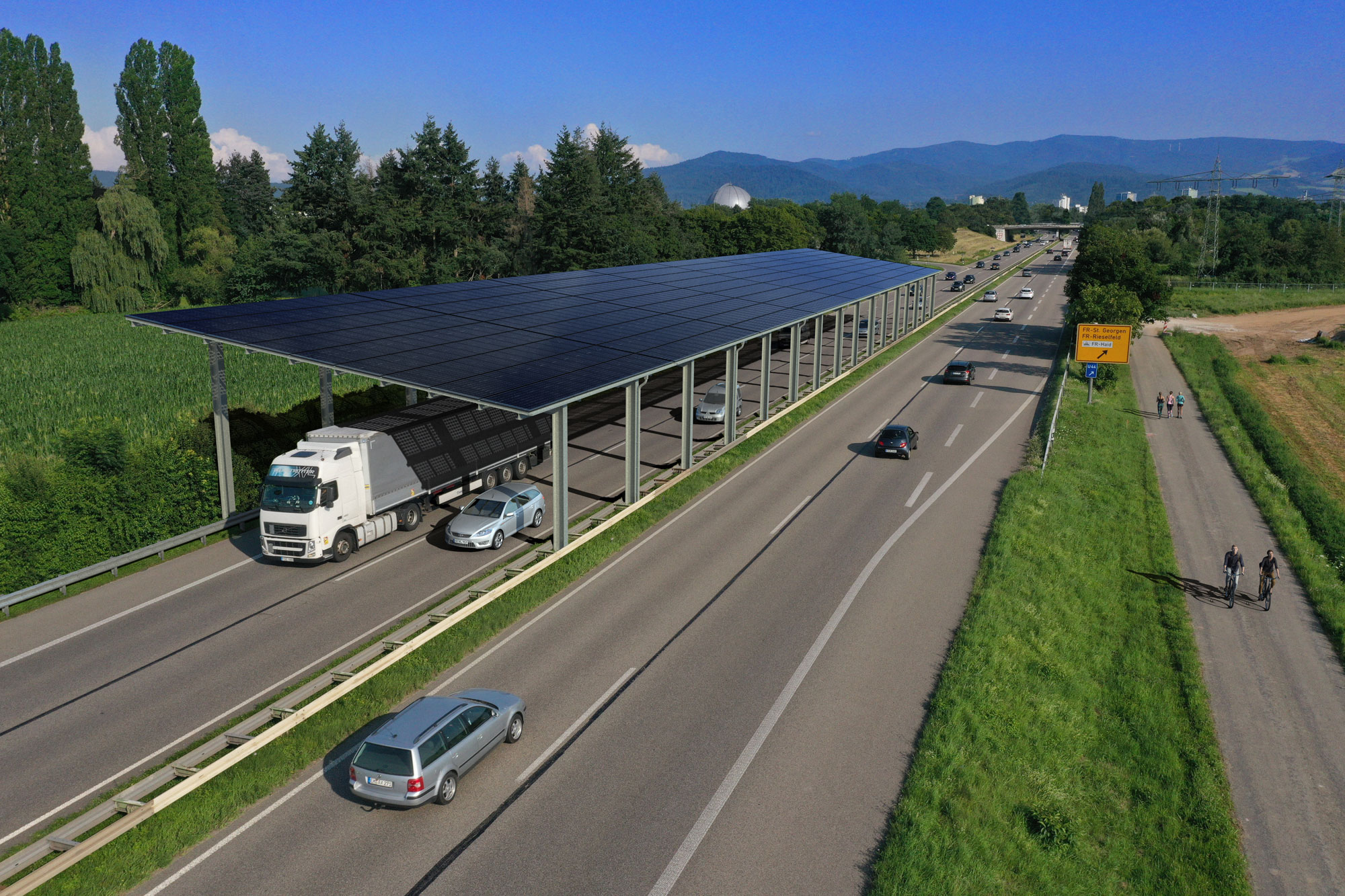| Duration: | 03/2020 - 02/2023 |
| Contracting Authority/ Sponsors: | Bundesministerium für Klimaschutz, Umwelt, Energie, Mobilität, Innovation und Technologie (BMK); Bundesministerium für Verkehr und digitale Infrastruktur (BMVI); Österreichischen Forschungsförderungsgesellschaft (FFG); Schweizer Bundesamt für Straßen (ASTRA) |
| Project Partners: | AIT Austrian Institute of Technology (Konsortialführer); Forster Industrietechnik GmbH |
| Project Focus: |
PV-Süd – PV Roofing Over Roads
The provision of electric energy is increasingly important for ongoing road operation. Rising traffic volumes, additional streets and tunnels as well as new safety regulations all contribute to higher electricity needs.
Covering sections of road with PV roofs aims to:
- Generate energy using photovoltaic modules
- Ensure flexible implementation in high-level road networks (including rest areas, toll booths, traffic control checkpoints, bridges and tunnel entrances)
- Improve traffic safety (road condition, lighting)
- Improve the durability and longevity of the surface characteristics of the roadway by protecting against overheating and precipitation
- Provide additional noise protection
The goal of the project is to develop a prototype of a photovoltaic road roofing system, construct a demonstrator for said system and set up the necessary monitoring, and evaluate the photovoltaic aspects and potential positive secondary effects of such a system.
Designing the PV roofing system
Due to their considerable overall technical requirements, using photovoltaic systems to cover roadways represents a significant challenge. Various PV technologies available on the market will be studied and their suitability for this application tested. Preference will be given to highly efficient technologies with verified durability and longevity.
Much like road sign gantries, the roofing system should be accessible with ladders and maintenance walkways. The planning process takes snow loads, wind loads and impact forces into account. Potential damage to the structural system due to traffic accidents is also factored in so as to exclude the possibility of the failure of the entire structure. In addition, the support structure features a modular design, which allows it to be expanded in the direction of traffic.
Designing the structure
The roofing system requires a suitable modular concept and design. When placing a PV system on an overhead structure, selecting the right type of module is key. Taking into account static requirements, the type of installation (mounting method) and the design led to the selection of a highly efficient crystalline module technology, which allows for maximum energy yields on the limited roof surface.
Constructing the demonstrator
One key component of the project is the construction, assembly and subsequent monitoring of the demonstrator, which is the first of its kind to be erected over roads and highways. Since covering roads has a significant effect on the landscape, the design must not only meet functional requirements, it should also take architectural and design elements into account. An informational sign in the highway parking area alerts road users to the research project and raises its visibility.
Monitoring and scientific evaluation during operation
The measuring concepts developed will be implemented on the prototype and measurement data will be collected throughout the duration of the project. Monitoring will include yield and usage measurements and will also check whether this type of photovoltaic structure meets various requirements, including those with respect to drainage, wind and snow loads, structural integrity and impact forces, maintenance options and traffic safety.
Calculating energy yield and profitability
The profitability of investing in a PV roofing system primarily depends on the photovoltaic yield, which must offset the initial costs as well as any financing costs, along with the expenses for operating and maintaining the system. The use or sale of the electricity produced is key. The respective grid connections and load structures at the test sites will be analyzed and factored in.
The development, construction and monitoring of the prototype of a photovoltaic road roofing system will reveal both the specific challenges and beneficial secondary effects for PV noise control projects and remove barriers to implementation.
